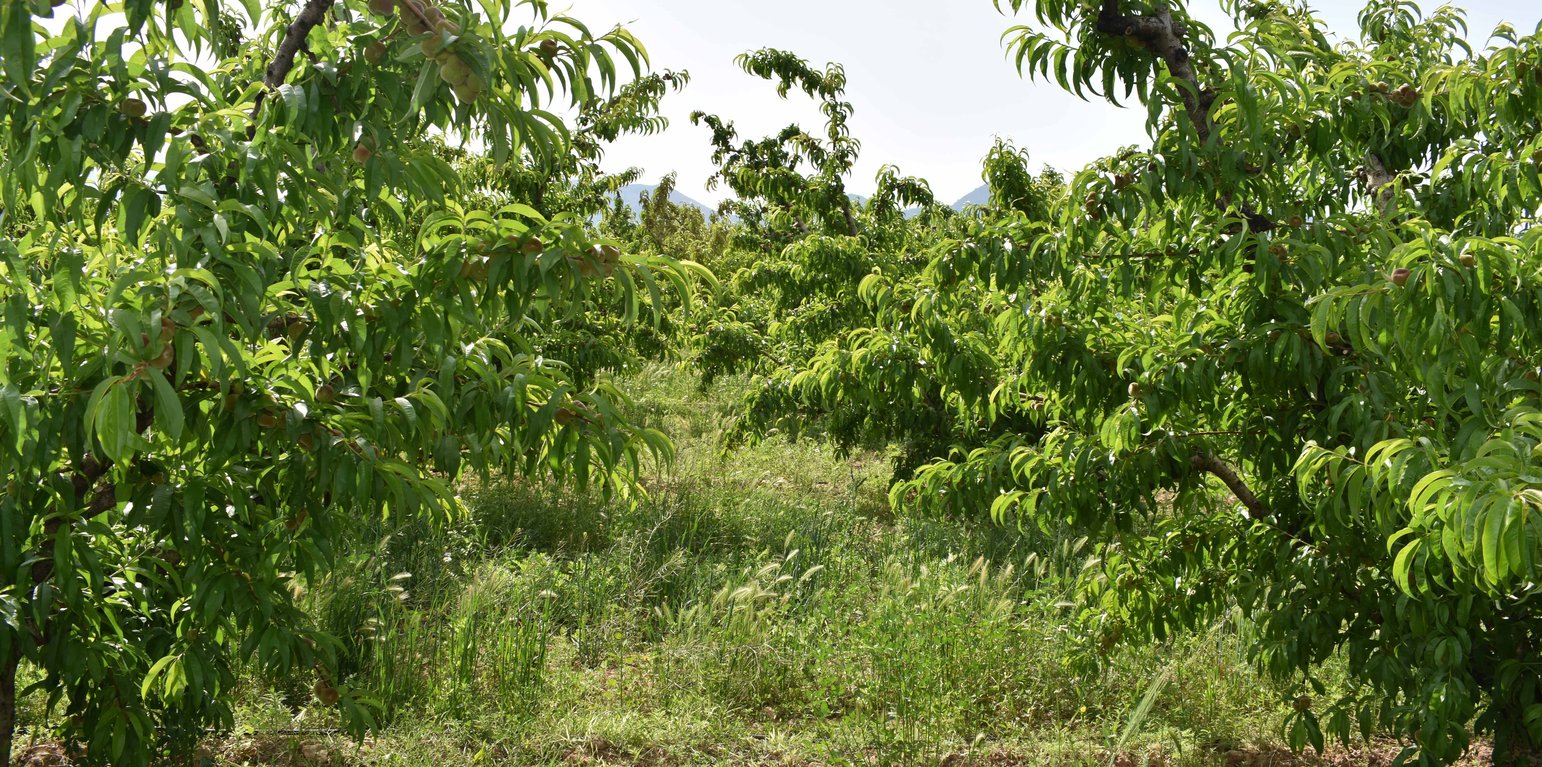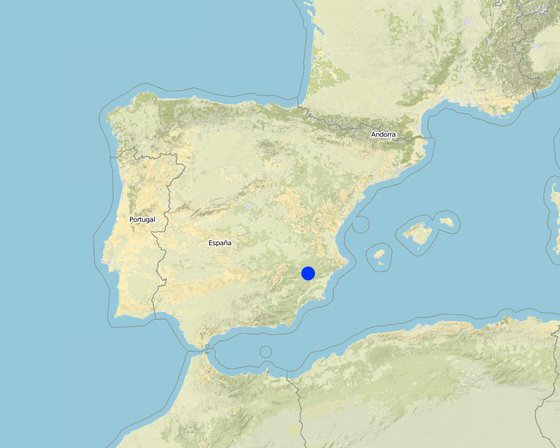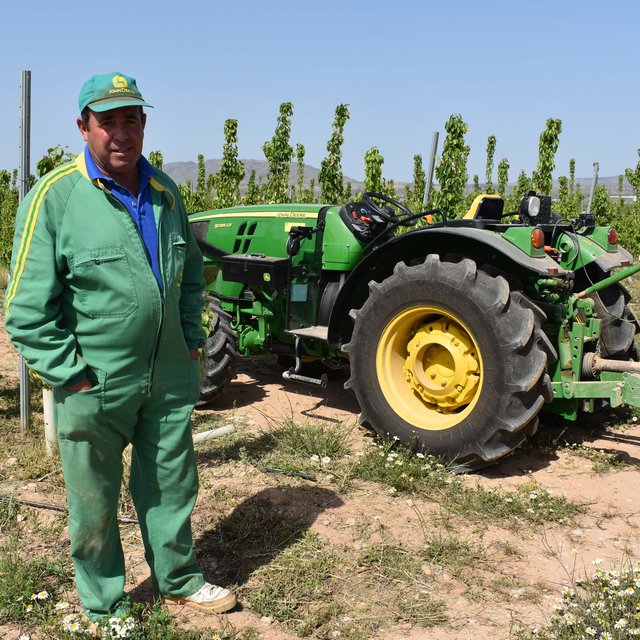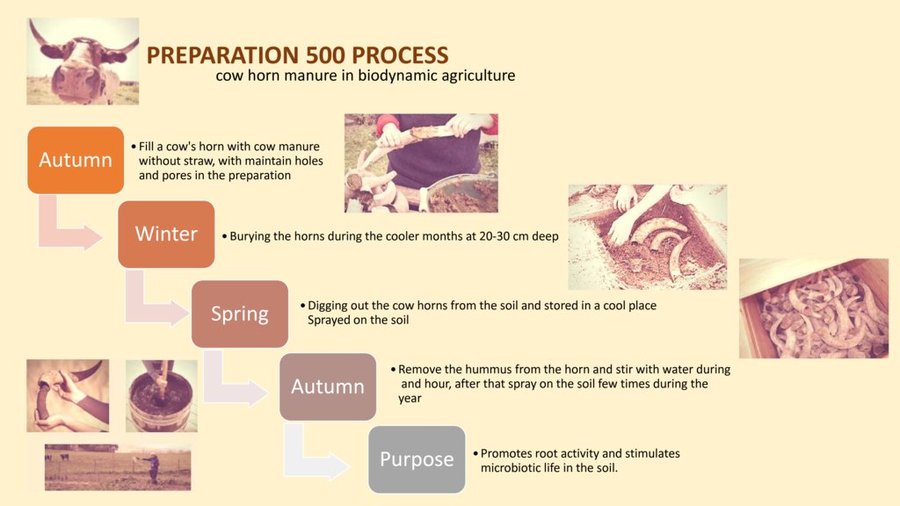



1. Preparation 500 application in agricultural soils under a biodynamic management is applied in a flat peaches orchard of 40 ha located in Jumilla in southeastern Spain. It is sited in the north east of the Region of Murcia, on the Altiplano area, close to the towns of Cieza and Yecla. This area has an important agricultural activity being the mainly crops the vineyards, Jumilla is a Spanish Denominación de Origen (DO) for wines that extends over
the north of the region of Murcia.
2. This technology is based on the application of the preparation number 500, commonly known as cow horn manure. Preparation 500 is made by filling a cow's horn with cow dung every year, and burying it in the soil during the cooler months (November through February). The horns should be buried open end down so that they will not become water logged if the pit is over watered. When the preparation is ready after 4 months should have turned into dark humus. It should be stored in a cool place and in glazed pots isolated. It is sprayed up to four times a year. The best times are in October and November and then again in February and March. It is stirred for one hour making a vortex. The Horn Manure preparation 500 should be diluted in good-quality rainwater that has been properly stored. The preparation is then stirred vigorously for exactly one hour before spraying. The water should be heated before stirring, ideally to body temperature. Spraying in the field area should be done in the evening, not before 5 pm (4 pm in winter) on a day that is not too windy or too hot, avoiding direct sunlight. A slightly overcast, late afternoon is ideal. Avoid spraying in the rain, or if heavy rains are forecast after spraying. Don't spray if night frost is expected, in order to ensure the correct working of preparation 500.
Preparation 500 is basically fermented cow dung. It is the basis for soil fertility, and the renewal of degraded soils.
3. The main purpose of this technology is focused in to treat the farm as a living system, based on preparations
which mean objective is prepare to soil as self-sustaining agro-ecosystem.
4. This flat tree orchard was under organic farming management before the current technology was applied, the major activity was elaborated the preparation 500 and sprayed out in the orchard. Secondary activities were focused in maintain the preparation during the rest of the year and improve the soil keeping vegetation cover and reducing the tillage.
5. There are several benefits observed after this technology was applied, regarding the soil quality a Strong humus layer was formed and organic matter increased, in general the soil structure improved. Another positive impact was the response against plagues, the establishment of self-sustaining agro-ecosystem increase the biodiversity and the
beneficial species in the orchard.
6. Land user is satisfied with the results of this technology in his orchard because a new market sector opens thanks to changing the orchard to biodynamic farming, the crop quality and the soil properties improved, soil organic matter, soil structure and response against plagues were enhanced. On the other hand, land user dislikes the great amount of money to change the agricultural management to biodynamic farming, the preparations and the external organization certifications are expensive.

Location: Jumilla, Murcia, Spain
No. of Technology sites analysed: single site
Spread of the Technology: evenly spread over an area (approx. 0.1-1 km2)
In a permanently protected area?:
Date of implementation: 2014
Type of introduction






| Specify input | Unit | Quantity | Costs per Unit (euro) | Total costs per input (euro) | % of costs borne by land users |
| Labour | |||||
| weed cutting | persona/dia | 2.0 | 60.0 | 120.0 | 100.0 |
| Filling horns, burying and recovery | persona/dia | 15.0 | 60.0 | 900.0 | 100.0 |
| Mixing hummus with water and spread out preparation 500 | persona/dia | 5.0 | 60.0 | 300.0 | 100.0 |
| Equipment | |||||
| electricity | item | 2.0 | 18.0 | 36.0 | 100.0 |
| Cow horns to be filled with cow dung | item | 100.0 | 10.0 | 1000.0 | 100.0 |
| glazed storing pots for Preparation 500 | item | 3.0 | 50.0 | 150.0 | 100.0 |
| tractor with trailer (hire per day) | pieza | 1.0 | 30.0 | 30.0 | 100.0 |
| cow dung | item | 5.0 | 60.0 | 300.0 | 100.0 |
| Plant material | |||||
| shovel | item | 1.0 | 15.0 | 15.0 | 100.0 |
| tank | irem | 1.0 | 10.0 | 10.0 | 100.0 |
| 1.0 | 3000.0 | 3000.0 | 100.0 | ||
| Fertilizers and biocides | |||||
| cow manure needed to produce Preparation 500 | kg | 10.0 | 10.0 | 100.0 | 100.0 |
| organic amendment | |||||
| Total costs for establishment of the Technology | 5'961.0 | ||||
| Total costs for establishment of the Technology in USD | 6'311.22 | ||||
| Specify input | Unit | Quantity | Costs per Unit (euro) | Total costs per input (euro) | % of costs borne by land users |
| Labour | |||||
| Biodynamics preparations application | persona/dia | 15.0 | 60.0 | 900.0 | 100.0 |
| 5.0 | 60.0 | 300.0 | 100.0 | ||
| 2.0 | 60.0 | 120.0 | 100.0 | ||
| Equipment | |||||
| tractor with trailer (hire per day) | item | 8.0 | 30.0 | 240.0 | 100.0 |
| Fertilizers and biocides | |||||
| preparations | item | 10.0 | 10.0 | 100.0 | 100.0 |
| manure | item | ||||
| Total costs for maintenance of the Technology | 1'660.0 | ||||
| Total costs for maintenance of the Technology in USD | 1'757.53 | ||||
Biodynamic farming reduce soil degradation
the soil keept the moisture because the organic amendment applied in preparation 500